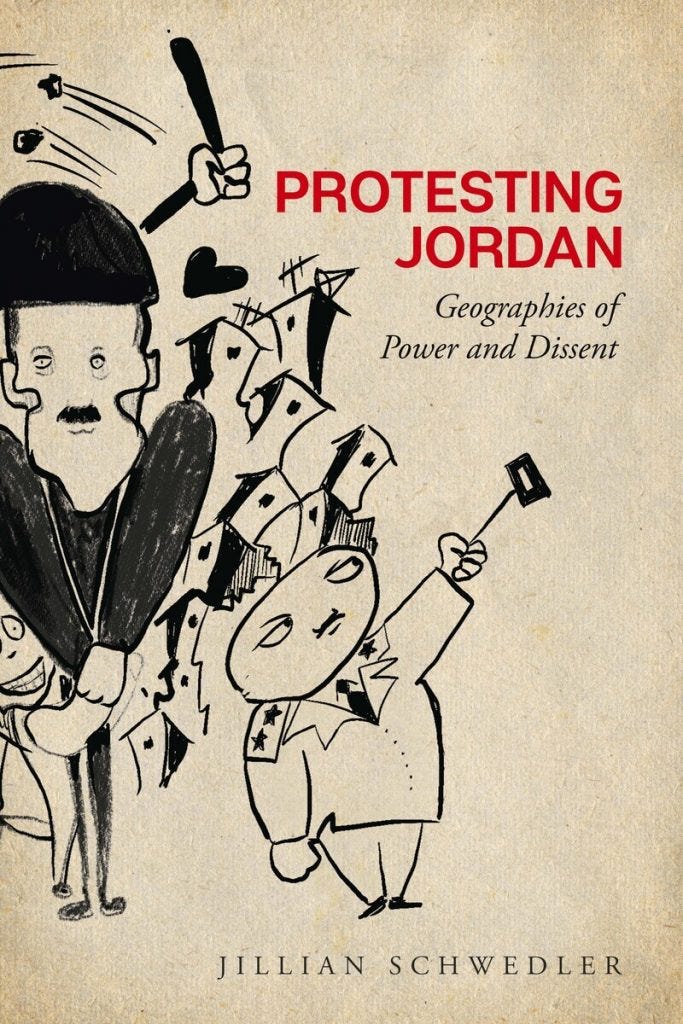I wrote my dissertation and first book about Jordan, back in the 1990s, before there even was an Abu Aardvark, or blogs. The SEO optimized title State Interests and Public Spheres somehow didn’t make it a runaway bestseller, or tell readers anything about what the book was about. But the subtitle was a bit more on point: The International Politics of Jordan’s Identity. Before I left for my research, I had been warned to be very careful about bringing up Jordanian-Palestinian relations, because it was a very sensitive topic that could get me in trouble. From the minute I arrived, Jordanian-Palestinian relations were all anyone wanted to talk about: academics, politicians, activists, taxi drivers, students. The tabloid press thrived on sensationalist stories and incendiary columns about identity issues. It was the right time for me to be there working on that topic. It taught me the importance of being deeply embedded within local context and meaning in order to understand what was transgressive and what wasn’t, to see why some political claims threatened the monarchy and others did not, to grasp the significance of ideas and arguments moving from private conversations into the public sphere.
Jillian Schwedler’s remarkable new book, Protesting Jordan, takes on those themes and more. Schwedler has spent the last twenty years traveling to Jordan to research the political role of protests in the monarchy. Her book spans over a century of Jordanian political development, beginning in late Ottoman era and culminating in a discussion of extremely recent events such as the rift within the royal family between King Abdullah and his half brother Hamza. It’s not just the best book I’ve read about Jordan - way better than mine! - but also one of the very best political science books I’ve read this year. (You can listen to us talk about it in last week’s episode of my Middle East Political Science Podcast.)
Schwedler makes a number of key theoretical interventions in Protesting Jordan. She gives us a highly context-sensitive ethnography of protests, taking us inside a typical protest event to show how it plays out on the ground: where and when people assemble, how the different groups involved interact with each other, how the local community responds, where the police deploy. One of her key observations revolves around transgression and routine. Many big protests, the kinds with 10,000 participants that show up in the major protest event datasets, don’t actually bother the regime much at all. As long as they follow an established script - starting, say, at the Grand Hussein Mosque downtown and marching along a traditional protest route - the police won’t interfere and nobody really pays it much mind. A much smaller protest, one with maybe only a few dozen people, can have a far greater impact and attract much rougher regime repression, if held at a highly sensitive location or using slogans which directly target the King. Datasets on protest, she suggests, need to pay more attention to their meaning and less to just their size.
Her panoramic view of decades of Jordanian protests points to a few surprising conclusions. She reveals a country with frequent, regular protests - hundreds a year - which span highly local protests over employment issues to national level protests over Israel, subsidy cuts, or authoritarian rule. She shows how central these protests have been to the process of state formation and to the evolution of Jordan’s forms and degrees of repression. She also does an incredible job of showing how the regime’s response to protest has shaped Jordan’s urban geography. You can’t understand why Jordan’s state looks the way it does, both physically and institutionally, without taking into account its ongoing response to the risk and the reality of popular resistance.
Listen to Jillian Schwedler talk about Protesting Jordan on my podcast
Along the way, she lays waste to any notion that the regime benefits from any particular “monarchical legitimacy” - an oddly popular notion in political science and punditry about the Middle East. She tracks the entrance of direct criticism of the King into protest discourse over the years, despite the risk of severe repression to anyone making such public commentary. A monarchy which enjoyed unique legitimacy probably wouldn’t need to enforce its strict lese majeste laws which criminalize any public criticism of the monarchy quite so rigorously, or at all.
She also puts to rest the notion that Jordanians somehow did not join in the “Arab Uprisings” protest wave of 2011. While Jordanians failed to crystallize into a single overwhelming movement for change, and the regime did not fall, Schwedler shows effectively how those are the wrong standards. Coding protest movements by “success/failure” misses much of what makes them important: how they reshape state-society relations, how the regime responds to public challenge, how they create new political meanings, and so much more. Popular protests don’t need to overthrow regimes to make a real political and social difference - and they haven’t failed just because they don’t reach such a high bar, a bar which they may never have been hoping to clear at all.
Back in 2012, I facetiously titled a POMEPS collection of essays on Jordan’s protest wave “Jordan, Forever On The Brink.” Schwedler shows why this framing serves the regime’s interests - a Jordan seen as on the brink is better positioned to extract international aid and win a blind eye towards its domestic repression - and she shows that Jordan doesn’t have to be on the brink of regime collapse for protests to matter. Protesting Jordan should be a must read for scholars of the Middle East and of comparative politics more broadly, as well as for analysts, journalists and policymakers trying to understand the country’s politics.





well-summarized!